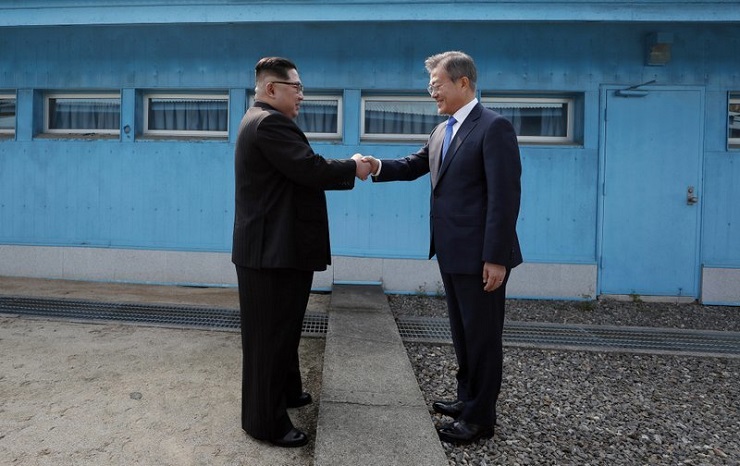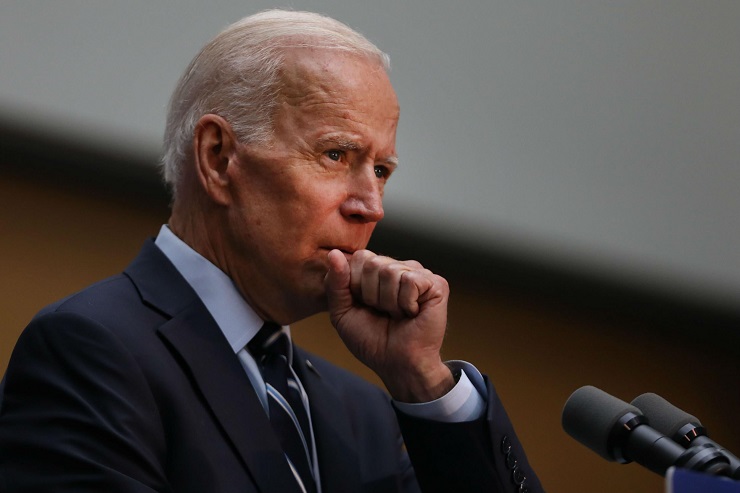
In our previous piece on inter-Korean relations, we touched on Kim Yoo-jung’s remark that in case of “maintaining impartiality and respect for each other”, both the restoration of the North-South bureau and the inter-Korean summit could be discussed constructively. “The end of the war will also be proclaimed in due course.” During this time, North Korea has taken a step forward that South Korea has managed to overestimate.
On October 4, 2021, direct lines of communication between South Korea and North Korea resumed operation after Pyongyang had not answered the phone from Seoul for 55 days from August 10 due to protests against the annual South Korea-US joint exercises.
Let’s recall that breaking and rebuilding ties is an on-and-off process. In 2020, for example, lines of communication were suspended at Pyongyang’s initiative because of propaganda leaflets distributed by “human rights” organizations of North Korean refugees operating in South Korea. Then there was the “silence” between the South and the North, lasting 413 days, ending July 27, 2021. On August 10, their work was stopped again.
The North Korean leader spoke at a session of the Supreme People’s Assembly on September 29 and announced that inter-Korean communication channels would be restored in early October. Kim Jong-un said North Korea “has no purpose or reason to provoke and harm South Korea,” so it is up to Seoul to determine “the future trajectory of inter-Korean ties.” Kim Jong-un stressed that “it depends on the South Korean authorities’ stance whether the inter-Korean relations will be restored to a new phase or will remain in the current state.”
The South Korean side immediately expressed hope for the resumption of inter-Korean dialogue, making plans as if the summit is a done deal.
On September 29, a senior Blue House official said that “even if an additional inter-Korean summit isn’t held within the remainder of the Moon Jae-in government’s term, the next administration could pursue” this trend.
On September 30, a spokesman for the reunification ministry said the ROK is preparing for stable communication with North Korea. Once channels are restored, Seoul plans to repeat the proposal to set up a system of video conference meetings for separated families and then exchange views on major issues of inter-Korean relations.
South Korean Unification Minister Lee In-young said in an October 3 interview with the Yonhap news agency that Seoul will actively work to hold high-level talks with Pyongyang before the end of this year. As for the inter-Korean summit talks, “it is better to move towards them calmly and firmly, rather than rushing.”
On October 4, South Korean Unification Minister Lee In-young said the restoration of South-North lines of communication represents a “restart” of efforts to improve inter-Korean relations.
Speaking at a ceremony marking World Korean Day on October 5, Moon Jae-in pointed out that South and North Korea should strive for joint prosperity before eventual reunification. As long as there’s contact. The day after the lines reopened, South Korea and North Korea exchanged regular calls. According to the Ministry of Unification, the two sides contacted through an inter-Korean communication point at 9 a.m. on October 5.
What is more important for us, however, is how unusual and breakthrough this step is. What caused it? To what extent will it be the first stepping stone for more, including the summit?
For the author, the restoration of communication lines is an indicative move, but its meaning is somewhat symbolic. After all, we are not talking about a government hotline but rather token contacts that exist “just in case.” That’s why the communication link between North and South Korea has been broken or re-established seven or eight times in its history. Meanwhile, at least during the latest developments, the hotline between the Ministries of Defense of South Korea and North Korea and a special communication channel have been working without interruption.
Now for the reasons for North Korea’s actions. The decision to re-establish the communication lines came very likely after the South Korea had refrained from mentioning the word “provocation” when North Korea conducted a series of missile launches in September 2021. In addition, on September 23, returning to Seoul at the end of his visit to the United States, Moon Jae-in said during a meeting with reporters that North Korea had abstained from serious, provocative actions that would cause the United States to abandon dialogue. He called for resuming dialogue with North Korea because, if the “dialogue vacuum” continues, “crises” of various types could arise, and peace and stability could be undermined. Commenting on North Korea’s missile launches, Moon Jae-in said North Korea had only engaged in acts of “low-intensity” escalation of tension while continuing to maintain its voluntary moratorium on nuclear tests and intercontinental ballistic missile launches.
According to Professor Yang Mu-jin, North Korea has been waiting for when South Korea and the US would not describe a North Korean missile launch as a threat or provocation. And such a moment could be a turning point for Pyongyang to re-engage with Seoul and participate in further talks.
But what is behind such actions by the South? From the point of view of some experts, this is an attempt to fulfill the obligations of the 2018 summits at the end of the presidential term because of the Pyongyang Declaration planned for Kim Jong-un to visit Seoul.
Alas, Moon Jae-in is not so much a supporter of inter-Korean rapprochement as a populist. His course is determined by the logic of factional struggle, within which his course as a Democrat must confront the anti-North Korea sentiment of the Conservatives. That is why inter-Korean rapprochement in his interpretation boils down to loud ceremonial events allowing Moon to “shine” in a blaze of glory, but not to provide substantial assistance to the DPRK where it is needed or attempts to overcome mutual mistrust where it exists.
In addition, Moon should take the graceful exit, with some “visible successes” at the end of his reign, which may insure him against possible reprisals. Since the ROK constitution does not allow for a second term, it is imperative for Moon that his successor treats well his faction, or at least does not try to immediately put him away. Meanwhile, Lee Jae Myung, the leading candidate from the democratic camp, is a serious political opponent of the incumbent despite his left-wing views.
But in what area can Moon accomplish the feat? The fight against the coronavirus is taking on a protracted nature. While South Korea was previously willing to trade in its “K-Quarantine” methodology, now 2,000 cases a day are considered the norm, despite reasonable vaccination rates. The concept of “living with the crown” is replacing ultra-harsh social distancing.
Most of the promises concerning the live of the masses have not been fulfilled. Also, the economy has been undercut by the coronavirus and by the failed conflict with Japan.
In this situation, with Kim Jong-un’s benevolent stance, success on the inter-Korean track is the only issue that will allow Moon to quickly boost his ratings and bow out gracefully despite the fact that back in the summer, the Northerners said they had no intention of sitting down at the negotiating table. On the other hand, even if the summit is held before March 2022, it will be as helpful as the second inter-Korean summit of 2007, which was held two months before the expiration of Roh Moo-hyun’s presidential term.
In the case of 2022, the chance of continuation is more significant, as Lee Jae-myung has also positioned himself as a supporter of cooperation with the North. And if he follows Moon’s course, opening a criminal case against his predecessor would be somewhat inconvenient, so the incumbent can expect to live out the rest of his life without significant problems.
But Seoul will still have to go for something more than silence instead of condemning “provocations.” Kim Yo-jong mentioned this possibility in her statement, but at the same time, she stated that Pyongyang is waiting for practical action. Not coincidentally, the North Korean propaganda website Arirang-Meari posted a comment on October 6 on behalf of Hyon Chol, a spokesperson of Korea Institute for National Unification. The deterioration of inter-Korean relations will continue until the South Korean side changes its hostile stance towards the DPRK, it states. “The joint South Korean-US military exercises and arms buildup are a source of mistrust and confrontation. The current situation confirms that the South only pays lip service to dialogue and improved relations, but does not seek to do so in practice.”
And in this regard, Seoul acts on the principle of “two steps forwards, one step backwards.” For example, on October 1, South Korean Foreign Minister Chung Eui-yong rejected North Korea’s demand for South Korea and the United States to abandon their hostile policies, reiterating that the allies have no such policies.
On the other hand, when asked if there is a need to ease sanctions against Pyongyang, the minister replied, “I think that now, time is ripe for the consideration of sanctions relief.”
Nonetheless, as the main prerequisite for resuming dialogue with the North, Chung emphasized denuclearization. “When it comes to the resumption of dialogue between the North and the US, the North’s willingness to denuclearize and its enforcement of substantive steps toward denuclearization is a great premise.”
So while the pro-regime South Korean media have made an “Olympic warming 2.0″ out of restoring the lines of communication, this is by no means a direct road to a new summit. There is such a chance, and the lack of a “standard” response to the missile launch was taken as a conciliatory gesture, in reaction to which the North Koreans also took a step towards rapprochement. But for more, we have to wait for new concessions already from Seoul.
Konstantin Asmolov, PhD in History, leading research fellow at the Center for Korean Studies of the Institute of the Far East at the Russian Academy of Sciences, exclusively for the online magazine “New Eastern Outlook”.
Related posts:
Views: 0
 RSS Feed
RSS Feed

















 October 13th, 2021
October 13th, 2021  Awake Goy
Awake Goy 




 Posted in
Posted in  Tags:
Tags: 
















